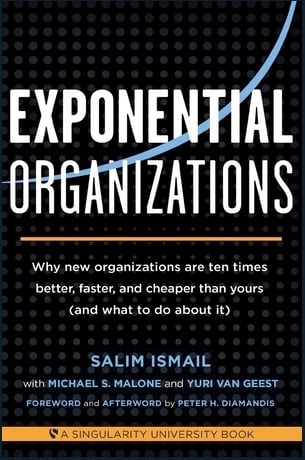UPDATED: As of 4 May 2022
When 70% of change programs fail to achieve their goals, it’s easy to get overwhelmed and shy away from strategy altogether.
But after working with over 1,000 companies in the past decade, Step Change has seen our fair share of clients whose strategy execution has created millions of dollars of incremental value — period on period, year after year. So we know that successful strategies aren’t simply urban legends.
And yet, some still fall through the cracks. So, what makes all the difference?
In this article, let’s take the time to look into the reasons that are preventing companies from successfully executing their strategic plans.
Bonus Video: Let Step Change CEO Ashton Bishop walk you through what makes an ineffective strategy.
Insight: Firms seldom achieve the expected results of their plans because of the gap between strategy and effective execution.
Data: 80% of leaders feel their company is good at crafting strategy but only 44% can say the same about their implementation. On top of that, only 2% are confident that they will achieve 80–100% of their strategy’s objectives. (Speculand)
Key Action Point: To execute strategic plans effectively, today’s executives and business leaders need to have the foresight to outline a well-structured strategy and work towards achieving an alignment with everyone in the organisation.
Why Do Strategic Plans Fail?
Here are the top five reasons why your strategy could be creating more wastepaper than actual value.
1. Lack of strategic focus
Many companies set unrealistic goals, and that compromises their focus. Without a strategic focus in place, it can be tricky to set a clear measure for success. That means losing out on valuable time and wasting critical resources.
Gartner found that around 56% of the time spent on strategic planning is wasted. To counter this, it is important to first understand your organisation’s strategic purpose.
This is where the strategic radar comes in. A strategic radar is a tool that paints a clear picture of your external and internal challenges and opportunities on a single page. At the heart of it sits your purpose. This enables you to gather key information and examine the context needed to understand where you are and where you need to be.
Recommended article: The Death of the SWOT Analysis and the Rise of the Strategic Radar.
2. Poor communication
What are your organisation’s core goals and objectives?
If you find that you or any of your team members are unable to communicate those clearly — chances are, not everyone is on board with what’s going on and are unsure about what you’re trying to achieve.
When 95% of employees do not even understand their organisation’s strategy or objectives, and with only 27% of employees having access to their company’s strategic plans — it’s no surprise that companies fall short of their goals.
Most plans fail because of poor communication between the management and their teams. The challenge here is to communicate your strategy across the organisation so everybody can get on the same page, together.
This makes effective internal communications just as critical as the strategy itself. Outlining your strategic plans and decisions in an accessible, easy-to-share one-pager with your team is a great way to keep communications clear and aligned.
3. Forgetting to manage business as usual
Who doesn’t want to transform things for the better? Change and the potential for success can be exciting. But getting caught up with new goals and plans is a mistake that often drives the organisation away from existing business initiatives.
In strategic planning and execution, it is important to consider and acknowledge your existing business efforts and the role they play in your overall strategy. Better yet, include your existing programs in your strategic plan. Then draw a line and determine which initiatives coincide with your strategy. From there, establish clear timelines to measure the success of your new and existing business initiatives.
4. Lack of alignment
More than 60% of organisations do not link their strategic goals and objectives with their budget.
This is just one of the many areas in which a lack of alignment can make or break the results that you’re looking to achieve. Another example is alignment between management and teams.
You’re not setting yourself up for success when 20% of staff members resist implementation initiatives. If your employees are not 100% on board with your strategic decisions, it is highly unlikely that they’ll be able to execute your plans effectively.
Many teams and departments develop strategic plans that are not at all linked to the existing or bigger picture, which says a lot about the need for strategic alignment in organisations.
Ensuring alignment with all the critical stakeholders in your organisation not only gets you faster to where you need to be but also helps you paint a clear picture of what success looks like for everyone involved. This becomes a great opportunity to come up with the best solutions and techniques to deal with critical problems and issues that might come with change.
5. Not celebrating wins
Tracking and measuring success is a great result of setting up a clear strategic focus. After all, organisations must celebrate wins, no matter how little they may be.
Celebrating wins is a sure way to boost your team's satisfaction. For one thing, it reassures teams that their hard work had not been in vain. And it inspires them to do better knowing that everything they do brings them closer to where they need to be.
More importantly, celebrating the small goals also gives you the opportunity to reinforce alignment on important goals. It also addresses any pressing issues and setbacks that may be stopping you from executing your plans from start to finish.
And by celebrating these successes along the way, you highlight the importance of strategy and its execution across the entire organisation, so everyone is ready to face the next challenge head-on.
Tying It All Together
Whether you struggle with unrealistic goals, poor communication, managing existing initiatives, lack of alignment or a lack of celebration — the trick to overcoming these key strategic mistakes is not to pull a rabbit out of a hat.
Great leaders know that strategy isn’t smoke and mirrors, but dedication and mastery of key foundations. This is how you are able to understand the context you are working in and come up with a solution to navigate it.
Focusing on five key areas, Lockstep Baseline is the free business health diagnostic tool designed to help you gain the alignment and clarity needed to win in just three minutes.
Time is of the essence, so cut through the noise and nonsense with Lockstep Baseline. Get your strategic roadmap within three minutes for free today.
Download our 5 Reasons Your Strategy Is Failing And How To Counter Them One Pager
Identify common strategy mistakes in your organisation and counter them before they escalate with Step Change’s 5 Reasons Your Strategy Is Failing And How To Counter Them PDF. This free one-pager:
- Points out the signs of poor strategy
- Describes how they manifest in organisations
- Identifies the ways you can solve them
Get your copy today.


















